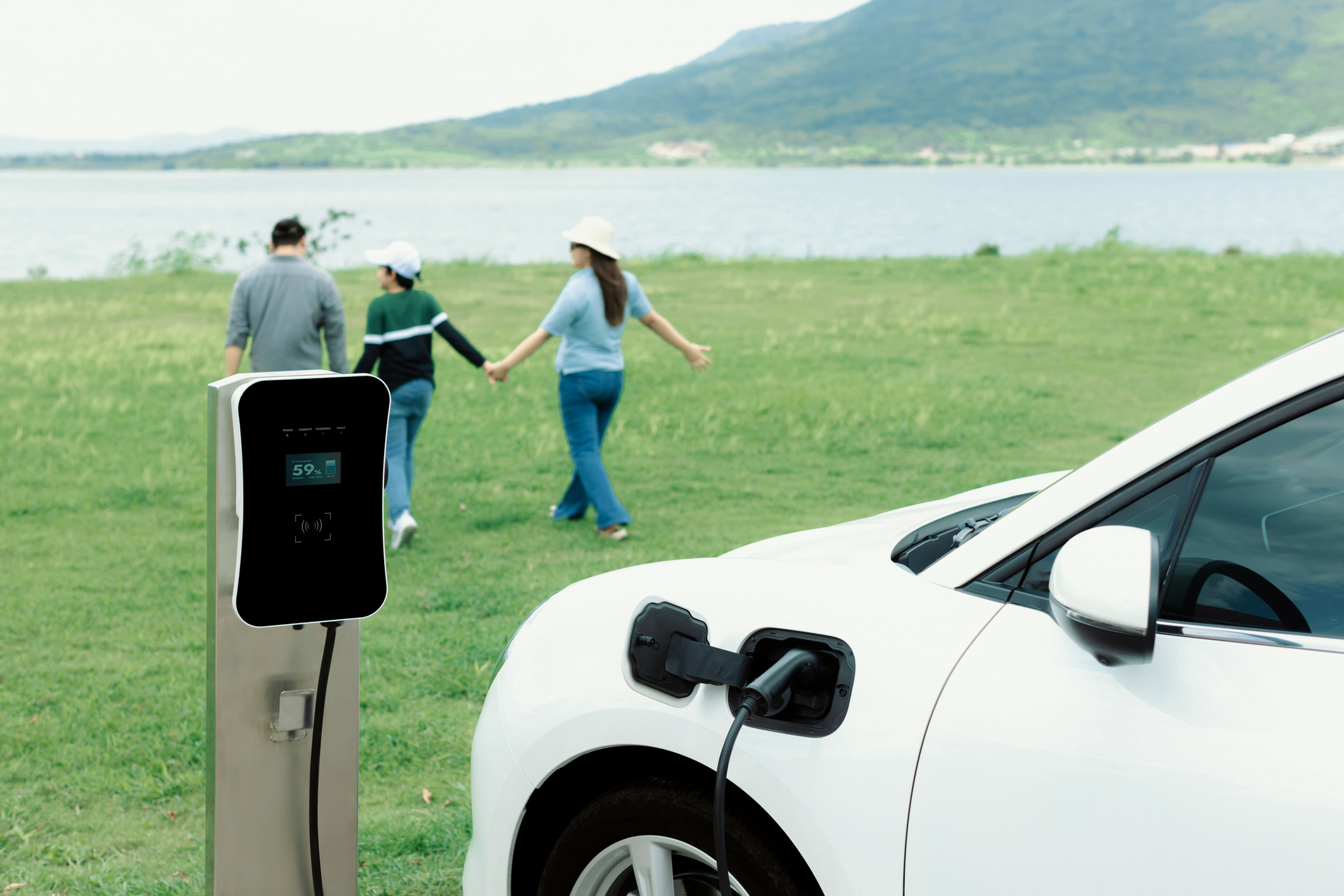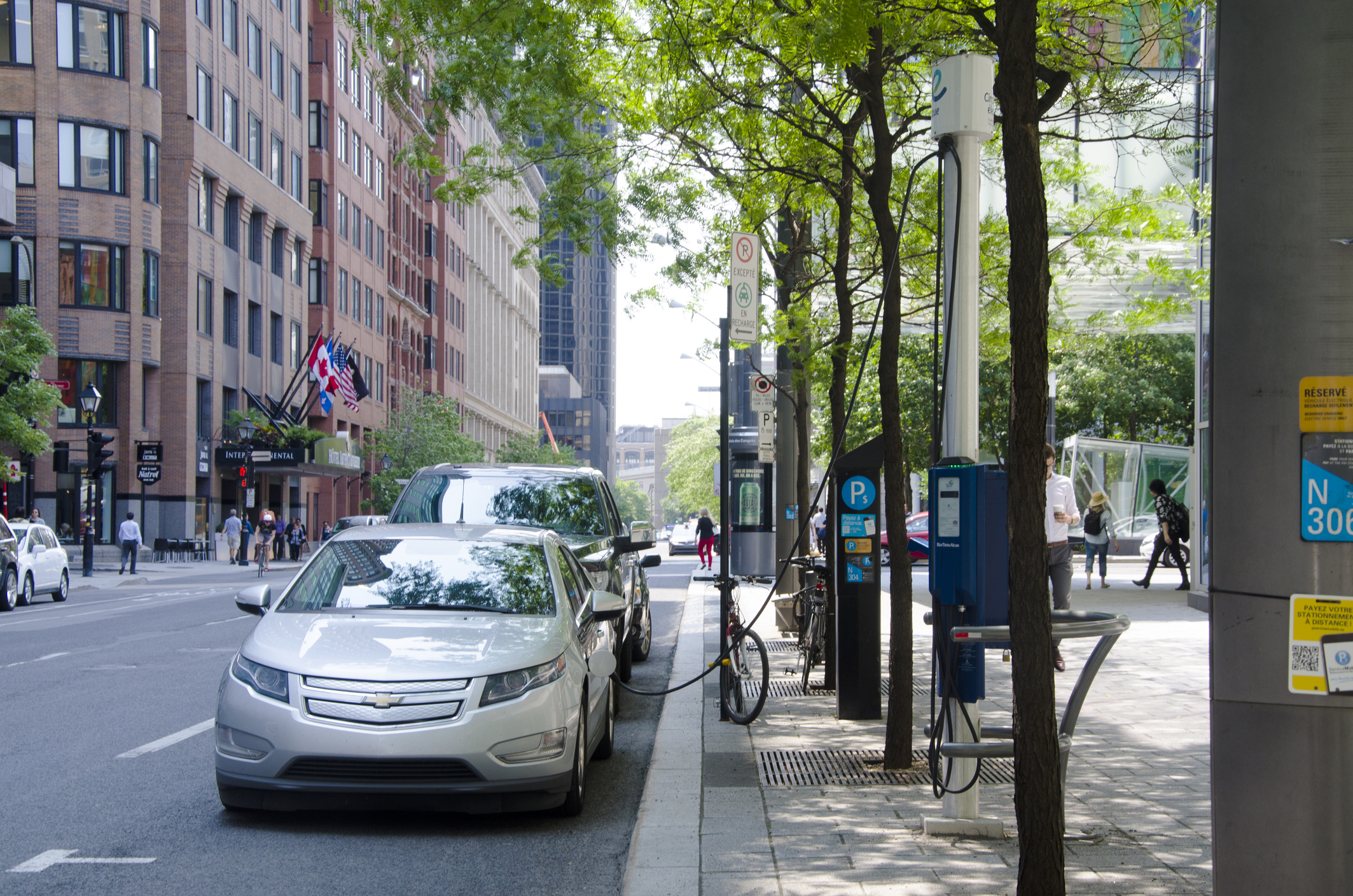Embarking on a summer road trip in your electric vehicle (EV) is an exciting and rewarding experience. Not only will you enjoy the scenic beauty of Canada, but they also promise a quieter, smoother ride with zero emissions. At Hydro Ottawa, we're proud to support EV adoption and help you plan the perfect EV road trip.
Electric vehicles in Canada are on the rise, and for good reason. While EVs offer a sustainable and environmentally friendly alternative to traditional gasoline-powered cars, there are a few things to consider when taking them on a road trip. But with proper planning, your only concern should be if you have enough car snacks.
Preparing for the trip
First and foremost, just as you would with a gas powered vehicle, ensure your EV is in top condition. Start by scheduling a service appointment if needed to check everything from battery health to tire pressure. Additionally, pack a portable charger for emergencies and any necessary adapters for different types of charging stations. Lastly, just like filling up your gas tank, make sure your EV is fully charged before you hit the road. To save on energy costs, consider charging during off-peak periods when electricity rates are lower.
Next, it’s crucial to know your EV's range. One of the main concerns is “range anxiety.” The fear of depleting your battery before reaching a destination or charging station can be a real concern, particularly in areas with less developed charging infrastructure. While battery ranges are improving and most EVs now have a range of around 400 km, having a clear idea of your vehicle's capacity is important for long-distance travel.
Another consideration with EVs is the longer refuelling time compared to gas cars, which can be refuelled in minutes. Depending on the charger level, it could take up to 10 hours for a full charge. Similar to filling up your gas car, the time needed to charge your EV will depend on whether you need a full charge or just a top-up. This provides a perfect opportunity to take a break, stretch your legs, have a snack, or even enjoy a meal. With a bit of planning, these longer stops can become enjoyable parts of your journey, allowing you to rest and recharge along with your vehicle.
It’s important to note that time to full charge and range per hour can vary depending on the vehicle and battery, and other factors like weather conditions, type of driving terrain, driving style, using your air conditioning or heating, and total vehicle load.

Public charging options in Canada
Although the Government of Canada is taking action to increase access to public EV charging, there may still be gaps in coverage, especially in remote or rural areas.
The good news is that EV charging infrastructure is spreading rapidly in Canada, making it easier than ever to head out on a long-distance road trip in your EV. Canadian EV drivers have access to nearly 30,000 publicly funded charging ports at over 11,000 locations nationwide. From St. John’s, Newfoundland and Labrador, to Victoria, British Columbia, you’re never too far from one.
When you're on the road, you'll encounter two main types of chargers: Level 2 chargers and Level 3 DC Fast Chargers. Level 2 chargers offer a moderate charging speed, typically taking 4 to 10 hours for a full charge and providing 16 km to 50 km of range per hour of charging. On the other hand, Level 3 DC Fast Chargers can replenish your battery from empty to 80 per cent in about 20 to 30 minutes—eight times faster than Level 2 chargers. These fast chargers are typically found along highways and major roadways, making them ideal for long drives.
To find a charger near you, use the Natural Resources Canada Electric Charging Stations Locator tool, or leverage popular apps like PlugShare and ChargeHub, which offer comprehensive maps of charging stations in both Canada and the US. There are also several major charging networks operating across Canada, including FLO, Petro-Canada, and Tesla Superchargers, offering convenient charging locations on major highways, in urban centres, and near popular tourist destinations. For instance, if you're planning a road trip from Toronto to Vancouver, you'll find ample charging options along the Trans-Canada Highway, typically at least every 65 km. If a charging station is closed or not working, it's similar to finding another gas station for a fuel vehicle—you'll need to locate an alternative nearby. To avoid potential issues, it's a good idea to start looking for a charger before your EV reaches 20 per cent. This gives you plenty of time to find another station if your first choice is unavailable.
Initiatives like the Zero Emission Vehicle Infrastructure Program (ZEVIP) are driving the installation of more chargers to meet current and future demand. In fact, thanks to such initiatives, the availability of public charging stations in Canada has increased by an average of 45 per cent annually since 2016, with a notable surge of 72 per cent growth between 2022 and 2023.

Charging etiquette and tips
When using public charging stations, it's important to follow some basic etiquette.
- Be mindful of time limits by using the charger only as long as necessary to replenish your vehicle’s battery and moving your vehicle promptly once done
- Respect reserved spaces by avoiding parking in designated EV charging spots unless actively charging
- Keep the charging station in good condition by ensuring the connector is properly returned to its place and taking any snack wrappers with you
- Don't unplug other vehicles from charging stations unless given permission
- Share charging stations if all chargers are occupied. Prioritize sharing with others who urgently need to charge.
- Report issues by notifying the appropriate authority or app provider if you encounter a malfunctioning charger to expedite repairs.
These small actions contribute significantly to a positive and hassle-free experience for all EV drivers.

Managing charging costs
The cost of public charging varies depending on the provider and the type of charger. Here are some tips to enjoy the benefits of EV road tripping while minimizing costs.
- Charge during off-peak hours before you leave. Off-peak hours may be cheaper than charging during peak times, depending on the charging provider and your electricity plan
- Plan your route strategically by utilizing online tools, resources and apps to map out charging stations, ensuring you can access free or low-cost charging options whenever possible.
- Take advantage of charging network memberships offering plans with discounted rates, which can lead to significant savings over time, especially for frequent road trippers.
- Look for free or discounted charging locations, such as shopping malls, hotels, or certain public parking lots, which may offer free or discounted charging for customers.
- Optimize your driving habits by driving at moderate speeds, avoiding aggressive acceleration and braking to help maximize your EV's range and reduce the need for frequent charging.
- Seek out EV-friendly tourist destinations in Canada with ample charging facilities to keep your EV powered up.
Explore Hydro Ottawa's website on EVs, including information on charging stations, incentives, and more.